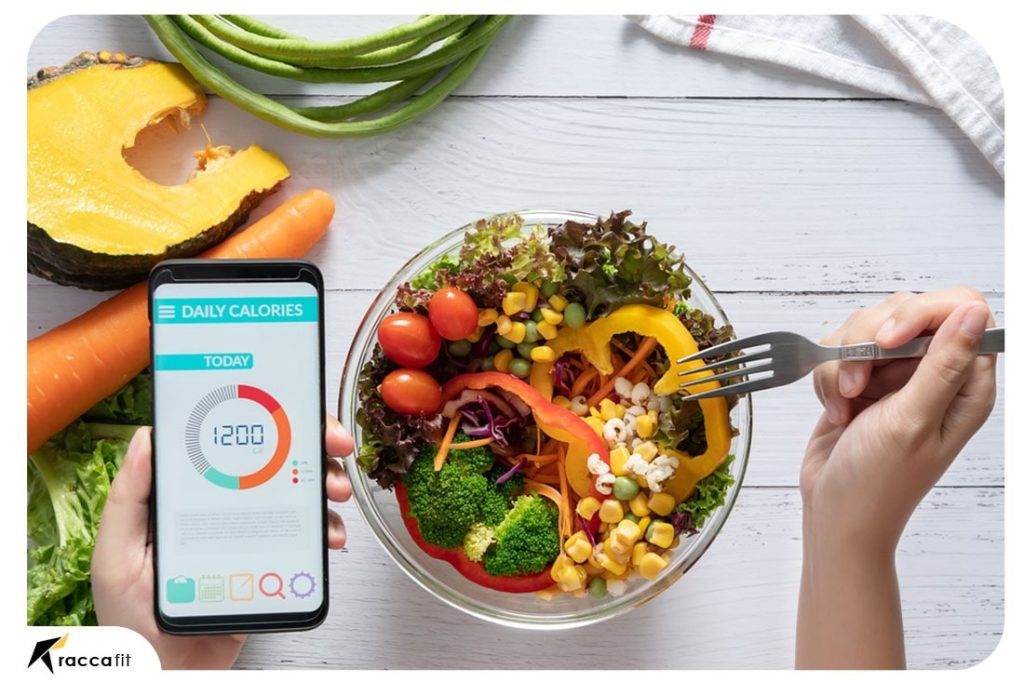Embarking on the journey of motherhood brings along its own unique set of challenges, and weight gain is a common one. Many new mothers find themselves trying to balance nurturing their newborn while also wanting to shed the extra pounds gained during pregnancy. If you find yourself in this situation, you’re not alone. This comprehensive guide will introduce you to a balanced “diet plan for breastfeeding mothers to lose weight“.
This is not just about losing weight. It’s about nourishing your body so you can nurture your baby while breastfeeding. While you might be eager to get back to your pre-pregnancy shape, remember that rapid weight loss might affect your health and milk supply. So what’s the solution? We’re talking about a diet plan that helps you lose weight gradually while ensuring your baby gets all the nutrients they need.
Sounds challenging, doesn’t it? But don’t worry, we’re here to walk you through this journey. So let’s get started!
Importance of a Balanced Diet while Breastfeeding
Breastfeeding brings an additional dimension to this dilemma. The nutrition of your baby depends on what you consume. Eating a well-balanced diet ensures that your baby gets the necessary vitamins and minerals needed for their growth and development. But what does a balanced diet mean in this context?
A balanced diet is all about variety, proportion, and moderation. Variety means eating different foods from each of the major food groups. Proportion refers to consuming the right amount from each group. Moderation is about balance – eating not too much and not too little, and avoiding certain foods and beverages.
Learn more: 7-Day Low Glycemic Diet Plan: Fuel Your Body Right
Understanding your Caloric Needs
To produce breast milk, your body requires extra calories – about 500 additional calories per day. But let’s make a mental note here – it’s not about eating for two. Rather, it’s about choosing the right types of food that offer high-quality nutrients.
So, how do you choose these nutrient-rich foods? Look for foods that are high in vitamins and minerals, fiber, and protein. Avoid foods that are high in sugar and unhealthy fats. These foods might be high in calories, but they’re low in nutritional value.

The Diet Plan for breastfeeding mothers to lose weight
Foods to Include
We’ve established the importance of a balanced diet and understanding your caloric needs. Now, let’s delve into the specifics.
Fruits and Vegetables
Fruits and vegetables are, without doubt, a must-have in your diet plan. They are high in fiber, which makes you feel full for longer, helping you reduce the urge to snack. This is particularly beneficial when you’re trying to lose weight.
In addition, fruits and vegetables are rich in essential vitamins and minerals, which get passed on to your breast milk and benefit your baby. For example, dark leafy greens are a great source of iron, while citrus fruits are high in vitamin C.
Whole Grains
Whole grains, such as oats, brown rice, and quinoa, are highly beneficial for breastfeeding moms. They’re high in fiber, keeping you full for longer. Furthermore, they release energy slowly throughout the day, keeping you energized and reducing cravings for high-sugar foods.
Whole grains are also a rich source of vitamins and minerals, including vitamin B and iron. These nutrients are essential for your health and your baby’s growth.
Proteins
Proteins are crucial in your diet, particularly for repairing and building new cells – something extremely necessary after childbirth. Sources of protein include lean meat, fish, eggs, dairy products, and legumes.
If you’re a vegetarian or vegan, it’s particularly important to focus on plant-based protein sources like lentils, chickpeas, and tofu. Remember, protein-rich foods not only contribute to your body’s recovery but also aid in producing quality breast milk.
Hydrating Fluids
Staying hydrated is absolutely crucial while breastfeeding. Breast milk contains about 88% water, so drinking fluids is essential for its production. It’s best to sip on water throughout the day, but you can also drink milk or unsweetened fruit juices.
Keep in mind, though, that not all fluids are beneficial. Try to limit caffeine intake, as it can lead to your baby becoming irritable and sleepless. Similarly, avoid sugary drinks like sodas and certain fruit drinks, as they can lead to weight gain.

Foods to Avoid
So, what are the foods that you should avoid? Here is a general list of what you should not eat.
High-Sugar Foods
It might be tempting to reach for a sweet treat when you’re feeling tired or stressed. But these foods can lead to unnecessary weight gain and sugar crashes, leaving you feeling even more exhausted.
Remember that not all sugars are the same. Natural sugars found in fruits and dairy products come with additional nutrients, unlike refined sugars found in candy, cakes, and soft drinks. So, the next time you’re craving something sweet, reach for a piece of fruit instead.
Learn more: Low Calorie Ice Cream Sandwich: Indulge Without Guilt
Highly Processed Foods
Highly processed foods might be convenient, but they often contain hidden sugars and unhealthy fats. They also tend to be low in fiber and important nutrients, making them less satisfying and more likely to lead to overeating.
So, even when you’re busy and tired, try to opt for fresh foods whenever possible. A simple meal made with fresh ingredients is usually a healthier and more satisfying option than a processed meal.
Sample Diet Plan for Breastfeeding Mothers to Lose Weight
In this section, we’re going to provide a detailed diet plan that can act as a guideline for breastfeeding mothers looking to lose weight. Remember, everyone’s needs are unique, so feel free to modify this diet plan to suit your own nutritional needs and preferences.
Early Morning
Start your day with a glass of warm water and lemon. This is a great way to kick-start your metabolism and help flush out toxins from your body.
Breakfast
For breakfast, you might opt for a bowl of whole grain cereal or oatmeal, paired with a serving of fruit such as a banana or berries. This combination is rich in fiber, which will keep you feeling full, and it also provides a range of essential nutrients.
Mid-Morning Snack
A mid-morning snack could consist of a handful of mixed nuts or seeds. They’re rich in healthy fats and protein, helping to sustain your energy levels throughout the day.
Lunch
For lunch, consider a serving of lean protein like grilled chicken or fish, paired with a generous portion of colorful vegetables. This could be served with a side of brown rice or quinoa, which are both excellent sources of complex carbohydrates.
Afternoon Snack
A healthy afternoon snack might include a piece of fruit, such as an apple or a pear, and a small serving of yogurt. This combination offers a balance of natural sugars, protein, and probiotics.
Learn more: 10 Low Calorie Smoothies: Healthy and Delicious in a Glass
Dinner
For dinner, focus again on lean protein, such as tofu or legumes if you’re vegetarian or vegan, along with a mix of vegetables. You could incorporate these into a stir-fry, curry, or stew, and serve with a portion of whole grains.
Evening Snack
Finally, an evening snack can consist of a warm cup of milk with a sprinkle of turmeric or a chamomile tea, which can aid relaxation and sleep.
This is just a sample diet plan. You can tailor it according to your personal preferences, dietary needs, and lifestyle. The key is to ensure you’re consuming a balanced, varied diet with plenty of fruits, vegetables, lean proteins, and whole grains. Also, drink plenty of water and keep processed, sugary foods to a minimum.
Remember, it’s not just about losing weight. It’s about nurturing your body and your baby, staying energized, and feeling good about yourself. That’s the ultimate goal.

Exercise and Weight Loss for breastfeeding mothers
Postnatal Exercise
Pairing a healthy diet with a gentle exercise routine can significantly assist in postnatal weight loss. However, it’s important to consult your healthcare provider before starting any exercise routine after giving birth.
It’s also crucial to listen to your body and take it slow. Even a few minutes of exercise can have significant benefits, so don’t push yourself too hard. Remember, the goal is not just to lose weight, but to boost your overall wellbeing and energy levels.
Low-impact Exercises
Low-impact exercises like walking, swimming, or Pilates can be a good way to ease back into fitness after childbirth. These exercises are easy on the body and can still help you burn calories, tone muscles, and improve mood.
For instance, taking your baby for a walk in the pram is a great way to get some exercise while also spending time with your little one. Similarly, postnatal yoga or Pilates classes can be a great way to reconnect with your body and build strength in a gentle way.
Conclusion
Losing weight post-pregnancy while breastfeeding isn’t about crash dieting or intense workouts. It’s about finding the right balance of nutritious food intake, gentle exercise, and most importantly, giving yourself the grace and time to recover and adjust to this new phase of life.
Always remember, the focus should be on providing the best for you and your baby, all while gradually shedding those extra pounds. Because ultimately, being a happy, healthy mom is the best thing you can do for your child.
FAQs
- Can I go on a diet while breastfeeding? Yes, but it’s more about a balanced diet rather than restrictive dieting. Your body needs extra calories for milk production.
- How much weight can I expect to lose immediately after delivery? Most women lose about 13 lbs during birth, which includes the weight of the baby, placenta, and amniotic fluid.
- Can exercise affect my breast milk supply? Regular, moderate exercise will not affect your breast milk supply as long as you’re consuming enough calories.
- Should I count calories while breastfeeding? It’s more important to focus on nutrient-rich foods rather than counting calories. However, be mindful not to overeat.
-
What should I eat for breakfast while breastfeeding and trying to lose weight? Opt for a nutrient-rich, filling breakfast like whole grain toast with avocado, or oatmeal topped with fruits and nuts.








